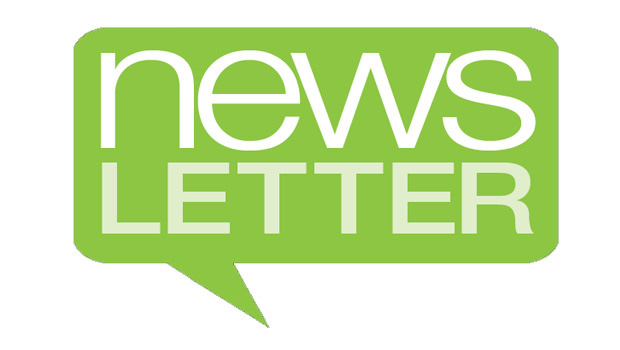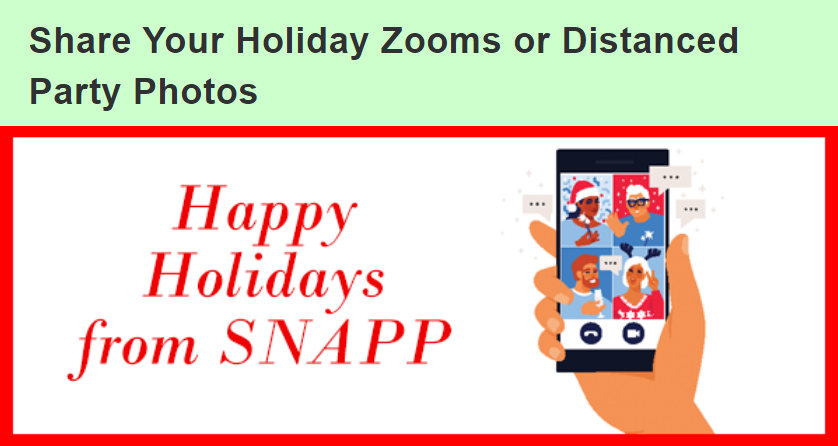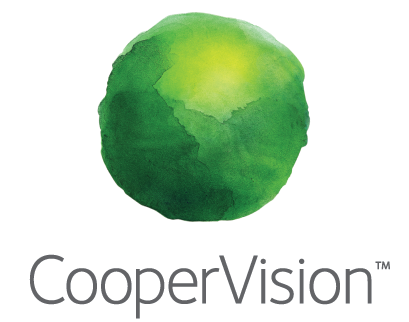

Wrapping Up the Unforgettable Year |

From the SNAPP Board |
Although it’s been said, many times and in many ways…2020 was a most uncommon year. For those SNAPP members who faced illness, financial uncertainty or the loss of a loved one, we hope you found some comfort from your friends and colleagues in this organization. And, for those who stepped out to find ways to build a “better mousetrap” during this time, thanks for cheering the rest of us along!
Your support and friendship motivated your SNAPP board to deliver a great program, in spite of the challenges we faced. Thank you for being creative, supportive, funny and determined! As a result, we have new ideas and even some new programs to share with you in the weeks ahead.
If you haven’t visited in a while, please stop by our Sponsors Special Offers page. These companies also faced rough waters in 2020 and, yet, they remained committed to supporting us. We owe all of our sponsor partners a debt of gratitude, so please consider returning the favor and supporting them as well!
As 2020 finally comes to an end, we know there’s work that remains to keep our patients and practices healthy. But let’s take a moment and raise our glasses to each other and ourselves. The melancholy words of Auld Lange Syne seem more appropriate than ever this year.
We’ll take a cup o’ kindness yet for days of auld lang syne.

The adage—you have to spend money to make money—done with care and consideration can certainly pay off. As we reach the end of 2020, consider making purchases or improvements using the IRS Section 179. This section of the tax code allows business taxpayers to deduct the cost of certain property as an expense when the property is first placed in service.
Also, don’t forget to account for purchases you’ve already made this year that might qualify for that deduction. If your business was closed or patient volume slowed and you added property, be sure to bring that to your accountant’s attention.
In this issue of SNAPP Insider, we present a case study of how advanced technology helps a practice.
Delegating Refractometry Allows Doctors to Spend More Time in Conversation or See More Patients |

Chris Butcher, OD, a licensed operator with three Pearle Vision locations in Oklahoma City, Oklahoma, shares how testing the highly automated Visionix® Eye Refract from Luneau Technology helped improve eye exam efficiency.
The practice brought Eye Refract in to test whether it allowed the doctors to delegate refractometry to technicians using the device. “It seemed like an interesting opportunity to explore. In most cases, refraction is not that complicated so a trained technician could be able to handle data collect,” he says. If that theory proved true, it would free the doctor to either spend more time talking to patients or seeing more patients. “We did it to see if we could see more patients by letting delegated refractometry be part of the process,” Dr. Butcher says.
The technology had to prove itself first. “What we found, was that in up to 85 percent of the cases, we were able to use the Eye Refract data without having to conduct another refraction in the exam lane,” he says. In the practice’s internal testing, we compared the doctor’s refraction data to that of the Eye Refract, and in close to 85 percent of the cases, the results were identical.
The practice has placed the Eye Refract system in the pretest room. It has a small footprint—less than 5 feet square at 44 inches long and 19 inches wide. It’s also operated with a tablet, which allows the technician to stay a safe physical distance from the patient.
The testing period in the practice also confirmed that the system helps them be more efficient. “We had more time in our schedule,” he says. “Adding a patient slot in the morning and in the afternoon is feasible, and it could even be more.”
With COVID-19 sanitizing and volume protocols, the idea of adding more patients onto the schedule may not be the key advantage. But with the refraction nearly finalized by the time the patient enters the exam lane, it leaves doctors with more time to spend with patients to review test results or explain the benefits of multiple pairs or antireflective lenses, for example.
“One of my biggest concerns was that I was unsure how patients would accept it. In actuality, patients were very impressed by that technology; they felt it was high-tech, and they enjoyed the refraction more.”
At the end of the exam, they can show patients their previous prescription and the one devised that day. “We ask patients if they can see better with the new prescription, using a 1, 2 or 3 scale, with 1 being worse, 2 being about the same and 3 being better. If the patient rates the improvement in vision at 3, it helps them appreciate what we’ve been able to determine during the exam and be more accepting of getting new eyewear when they say that they can see better,” Dr. Butcher says.
Speed is a factor in this era, too. Dr. Butcher would like to move patients through the exam room as quickly as possible—without rushing, of course. “Through our electronic health records, we can pull in their previous aided and unaided visual acuity, and with the wavefront automated lensmeter, we are getting accurate data. All this correct data helps us speed up the process,” Dr. Butcher says.
To learn more about Eye Refract efficiency gains, download your copy of the white paper “Better data, improved efficiency.”

Frustrated by contact lens prescription verification robocalls? If so, take action. In an email that Johnson & Johnson Vision sent to SNAPP members, it notes that the Federal Trade Commission’s Contact Lens Rule (CLR) updates added substantially more complexity and paperwork to the prescription release process for many eye care professionals. And, while the FTC finalized important actions to promote patient safety and accurate prescription dispensing, the Final Rule missed a critical opportunity to modernize the prescription verification process by eliminating robocalls.
JJV encouraged us to take the opportunity to advocate for the profession. The Contact Lens Rule Modernization Act would remove so-called “signed acknowledgment” requirements—replacing paperwork with posted signage—and eliminate robocalls as a permissible form of contact lens prescription verification, saving doctors’ offices from unnecessary paperwork and more robocalls that jeopardize your patient’s safety. Want to make your voice heard? Text “FTCNow” to 40649 or visit the Action Center that JJV created to reach out to your U.S. Senators to make your voice heard in support of the Contact Lens Rule Modernization Act.

|
||
|

How are you celebrating? Post your photos on our SNAPP Group Facebook page.




